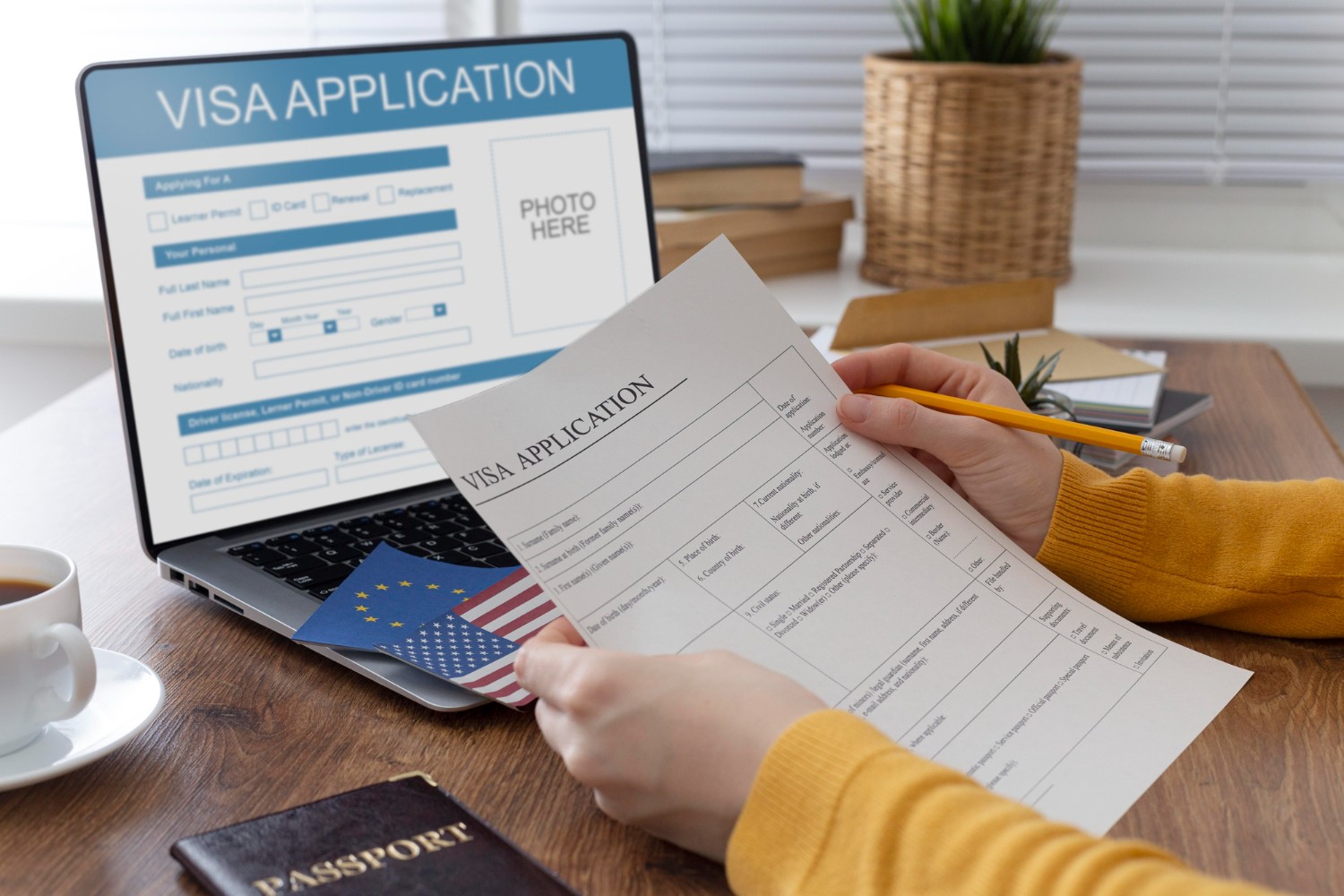How to get a student visa for studying abroad?

Have you ever dreamt about attending a university in another country? A student visa will be required of you if this is the case. It is possible to enter and remain in a country for an extended period of time in order to pursue higher education with the help of a student visa. This manual will explain how to apply for a student visa, what paperwork is needed, and the various visa options that are at your disposal. If you're thinking of studying abroad but haven't taken the plunge yet, this article is for you.
Documents Required for Student Visa Application
The following documents are required when applying for a student visa:
-A valid passport
-An official letter of acceptance from your chosen educational institution
-Evidence of financial support for your studies and living expenses (e.g., bank statements or a letter from your sponsor)
-Academic transcripts and diplomas from your previous studies
-Proof of English language proficiency
-Police clearance certificate
-Medical exam results
If you have any questions about the requirements, feel free to contact your local embassy or consulate.
Methods of applying for a student visa
A letter of acceptance from your chosen institution is the first step in the student visa application process. Students who have already received an admission letter are expected to initiate the visa application process. An individual can submit a visa application in one of two ways:
Online visa application method
Creating a student profile and applying for a student visa online is the more time-efficient option. All the necessary paperwork is available online and must be filled out accurately by the student.
Offline Visa application method
In order to apply for a visa offline, applicants must first obtain the application form from the relevant authorities' websites, fill it out completely, and then send it in.
When applying for a visa, you should make sure you are eligible and have all the required paperwork by doing research on the specific visa you need. To minimise unnecessary waiting or stress, it's best to apply for a visa well in advance of your voyage.
How to Start an Application for a Student Visa
An important consideration while considering whether or not to study abroad is the process of applying for a student visa. A student visa is required if you wish to study in a nation other than your own. Even though this may be a difficult process, we are here to assist you. Everything you need to know to get started on your student visa application is below.
Step 1: Choose a country and a university to study in before you can apply for a student visa. Choose the finest university for your needs by researching your options in the country of your choice. Check out their entry requirements, courses offered, and tuition rates. Think about the cost of living there, too.
Step 2: To qualify for a student visa, you must show proof that you are enrolled in an approved course of study in a foreign country. Thus, you must first apply to the school and program of your choice before submitting a visa application.
Step 3: Compile the necessary paperwork. Documents, including passports, birth certificates, bank statements, transcripts, and more, may be required depending on the country. When you're ready, you can start your visa application by gathering the required documents. Often, you just need to provide some basic information like your name, address, trip dates, and reason for visiting in order to accomplish this entirely online.
Step 4: Deliver your application to the consulate or embassy that is geographically closest to you. Student visa processing times might vary by nation and by season, so it's best to prepare ahead of time. If accepted, you'll be given a student visa good for the whole length of your program.
Step 5: Interviews at home are often necessary to obtain student visas from several countries. The interviewer wants to know how committed you are to studying abroad and if you are telling the truth about your application.
Step 6: Applying for a student visa typically costs money. Visit the website of the relevant embassy or consulate to get the current charge in your country. When you apply for your visa, you'll also have to pay a cost. Submit your visa application fee on time.
Finally, the end! There is no need to worry or stress over the student visa application process. You can make the procedure go as smoothly as possible if you follow these procedures and have all the necessary documentation ready in advance.
Conclusion
Student visa applications can be challenging, but they are a necessary part of studying abroad. These range from the sort of visa you require to the paperwork you must submit. We hope that you've learned a lot from this post on the different types of student visas and the processes you'll need to take to apply for and receive your desired visa in order to study abroad. If you put in the time and effort to do your homework and establish a detailed itinerary, you should have no trouble having a productive and pleasurable time studying abroad.
Related Blog

Why study Hospitality Management in the UK?
 (1)664aed680a8e9.png)
10 Easy Steps to Get a Study Abroad Scholarship
 (1)66437fcf8db2c.png)
Self-Application or Study Abroad Consultant: Which is Better?
6643606f06693.png)
What are the potential challenges of studying abroad, and how to overcome them?
6628d683c5c4c.png)
Budgeting Tips for Studying in Australia

How do I apply for a Master's at Canadian universities?

How to Prepare for a Canada Student Visa Interview?

How to Improve Your Communication Skills For Abroad Studies

A Comprehensive Guide To Applying For A PG Work Permit In Canada
65a670c6772ef.jpg)
UK Student Visa: New Rules from 2024 Applications

Top Colleges In Canada For MBA Without GMAT

Part-Time Jobs in Canada

Preparing Invitation Letter For Canada Visa: All You Need To Know

Cost Of Studying For Indian Students In The UK

Visa requirements for Indian students to study abroad in the UK

GRE Accepting Universities In The USA

Public Vs Private Universities - Which Is Better?

How To Apply Student Visa For The USA?
6505864a3be98.jpg)
Best Interior Design Programs In The UK
64fee13f97d75.jpg)
Difference Between SDS and Non-SDS Visa Applications
64f5f29debd74.jpeg)
Reasons Why You Should Study Hospitality Management In The UK?
64f09d22881c9.jpg)
What Are The Short-Term Study Abroad Programs For Indian Students?

How do I write an effective SOP for UK Universities to get visa assistance?
64e32f0ff2ec4.jpg)
Cost Of Studying In Canada For Indian Students
64df3a0b57710.jpg)
How to Find Student Accommodation in France?
64da4a92186d6.png)
What are the Reasons Students Choose Nursing as a Career Abroad?
64d5f2456ddca.jpg)
How to Find Paid Internships in Canada for Indian Students in 2023?

Things were a Culture Shock For an Indian Students in the UK
64cce0d0e81c5.jpg)
Tips For Overcoming Language Barriers For Indian Students Studying Abroad

How Can Internship Abroad Expand Your Career Horizon?

How to Find Student Accommodation for Indian Students in a Foreign Country

Which are the Main Scholarships by Australian Universities for Indian Students?

How to Prepare for Duolingo English Test?

What are the Preparations You Take Before Your IELTS Test?

How to Get a Graduate Assistantship in the USA to Students?

What are the Safety Tips for Indian Students Studying Abroad?

What are the Tips for Winning an MBA Scholarship in the UK?

How to Get Eight Bands in IELTS Speaking?

Which are the Leading Universities in the UK for Indian Students?

How do Indian Students Get into Law Universities in Canada?

What are the Trending Courses to Study at Universities in Canada?

What are the Different Health Science Courses Available in Canadian Universities?

Studying in the UK vs the US: Which is Better For Students?

Tips for Indian Students to Adjust to a New Culture while Studying Abroad

Jobs and Internship Opportunities for Indian Students while Studying Abroad

How to Choose the Right Course for Study Abroad

Popular Destinations for Indian Students to Studying Abroad

Scholarships and Financial Aid for Indian Students to Studying Abroad

How to Prepare for Standardised Tests like TOEFL and GRE for Studying Abroad

Why is Studying Abroad Good for Your Career?

Things to Consider When Choosing an Overseas Educational Program

How to Manage the Funds for your Study Overseas?

Studying Abroad on a Budget: Tips for Making it Affordable
642d3ed3db028.jpeg)
Scholarships and Funding Opportunities for Indian Students to Study Abroad

Tips for Preparing to Study Abroad: From Application to Departure

Benefits of pursuing an MBA from Canada

Things to Consider Before Choosing a Study Abroad Destination

How much does it cost to study abroad?

How to choose your university to study abroad

Why do Indians prefer to study abroad?

How to get an education loan in India to study abroad?

What are the factors influencing students to study abroad

Top 10 Study Abroad Consultants in Kerala

Most reputed study abroad consultants for UK education

